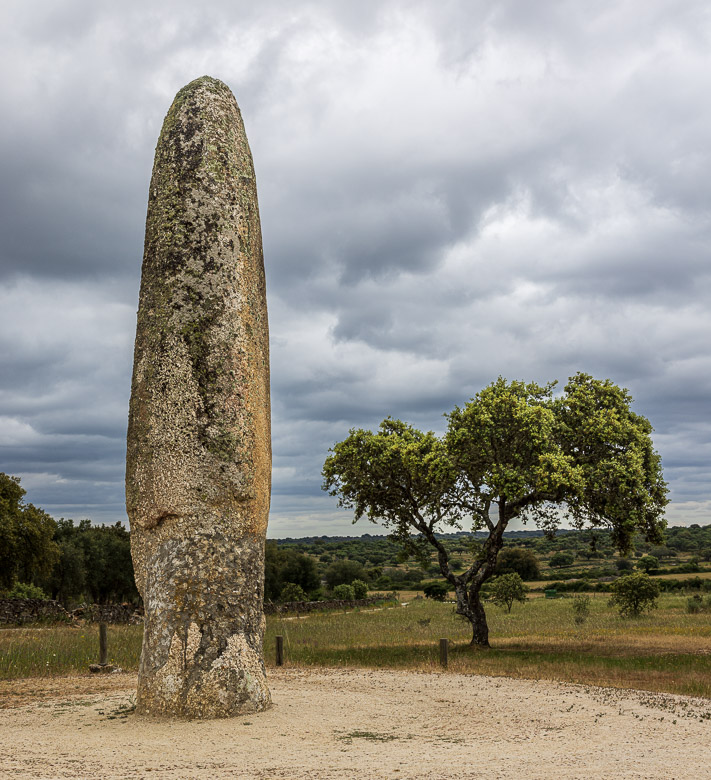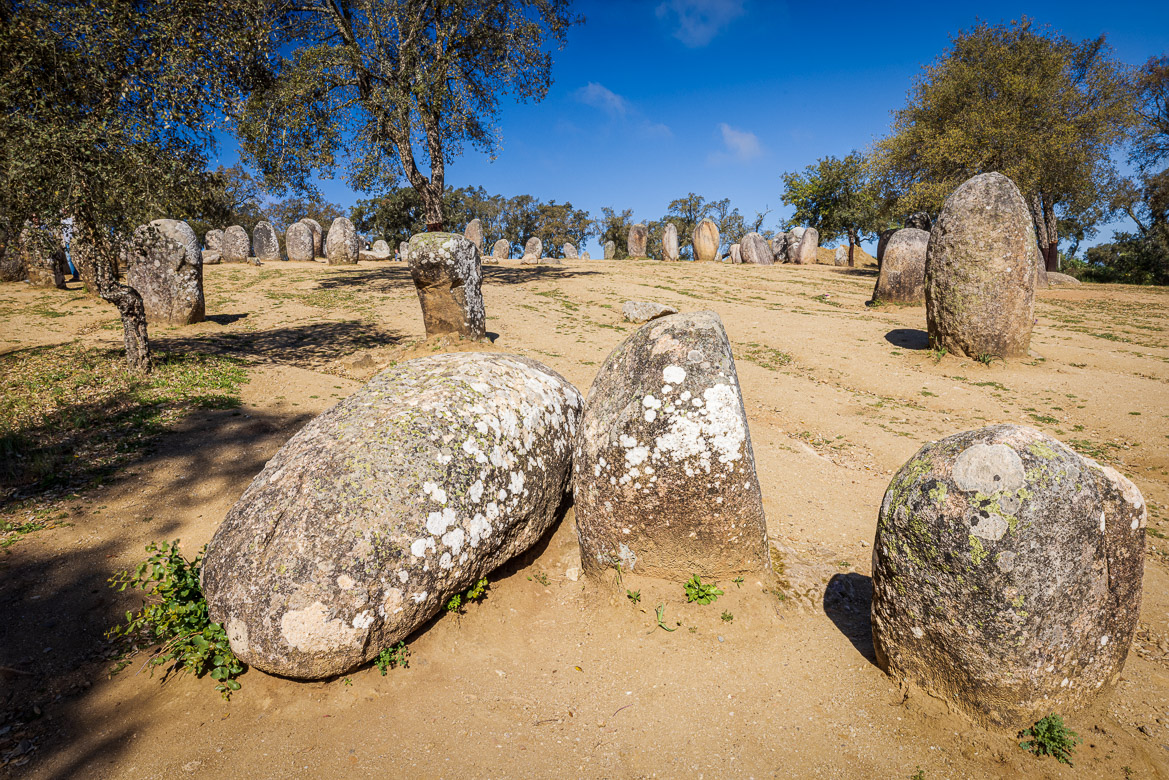
Portugal has a rich history, where the Romans and Moors have played important parts before the reconquest by the Christians in medieval times. But already before those time periods, there is a pre-historic past with many interesting sites to visit.
Approximately 7,000 years ago, during the neolithic (Stone Age) period the Iberian peninsula saw a transformation from hunters that followed seasonal migrations to more structured tribes that started to cultivate their own lands and bred their own animals. Our journey today will take us to a few sites from this period.
Chromeleque dos Almendres
The Almendres Cromlech or stone circle reflects the era of pagan enchantment during what we know as the New Stone Age. This is the oldest known stone circle in Europe and dates from 5he 5th or 4th millennium BC. It is also one of the largest with 95 standing stones in two elliptical circles laid out on a sloping hillside. The stones have mainly an elliptical form but some of the larger have a phallic shape. Some of the stones have engravings reminding us of ploughing and cattle raising, although after nearly 7,000 years the engravings are difficult to see and analyse. As a comparison, Stonehenge was erected around 2,500 BC, that is around 2,000 years later.
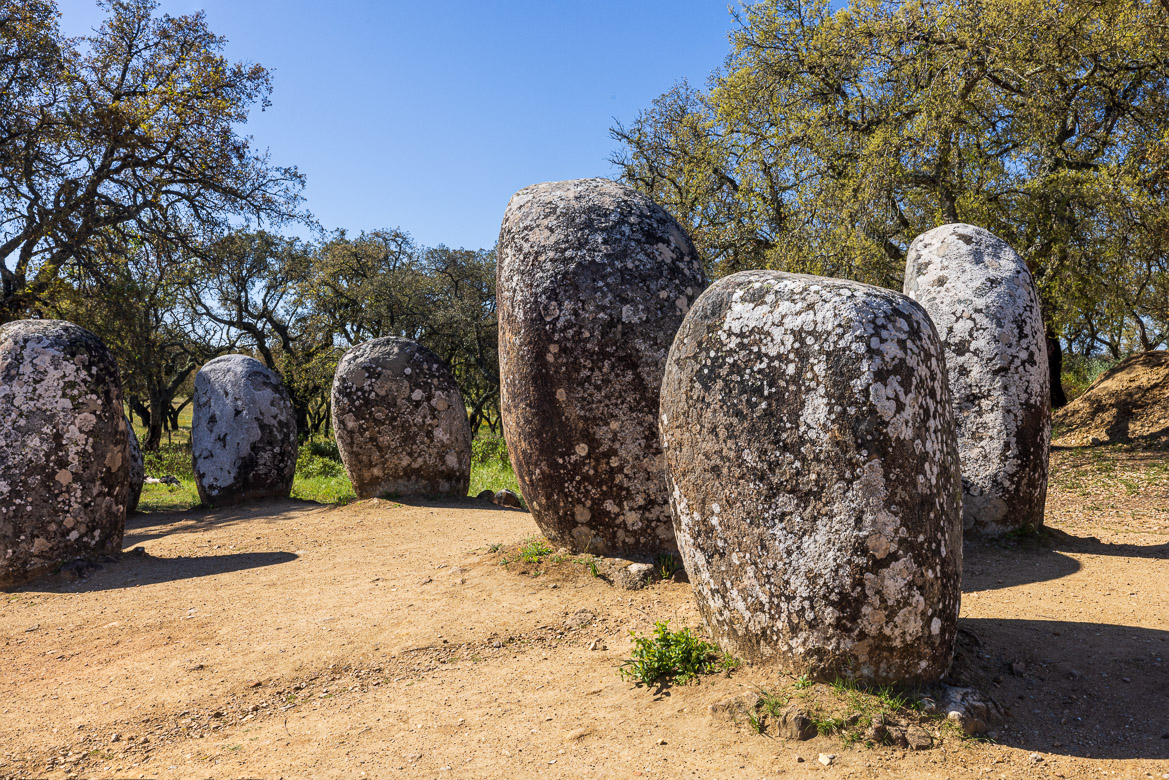
A little more than one kilometre away from the cromlech is a lone standing menhir (menhir is a freestanding raised stone, often shaped to resemble a phallus). It is placed so that the sun rises over the stone at the winter solstice, as seen from the cromlech. However, it is so far away from the stone circle that it is doubtful that Stone Age Man could actually see the menhir from the cromlech (although we don’t know the exact shape of the landscape at that time, nor the size of the vegetation on the ground). The menhir is 4.5 metres tall and around 0.9m in diameter.
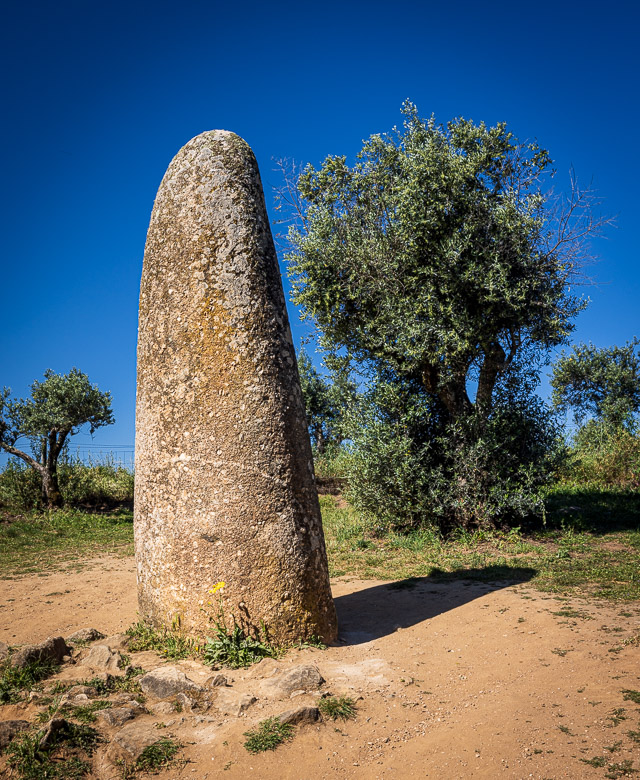
The true function of the Almendres Cromlech and Menhir is unknown, but the strong bond that both have with each other and with agriculture and herding seems to be undeniable. The late Portuguese Professor José Saraiva believed that the impregnating of the earthly womb with stone phalluses was some sort of cult to do with the fertilisation of the earth.
Surrounding the cromlech and menhir are cork plantations. The cork oak is an evergreen tree growing in southwest Europa and northwest Africa. Portugal accounts for 50% of the world’s oak harvest. The trees live for about 150 to 250 years. The cork is the bark from the tree, which is cut the first time, when the tree is around 25 years old and thereafter every 10 to 12 years. The bark is quite thick as can be seen in the images below, where the lower part of the trees have had their bark cut for cork production.
Cork oaks cannot legally be cut down in Portugal except for old unproductive trees.
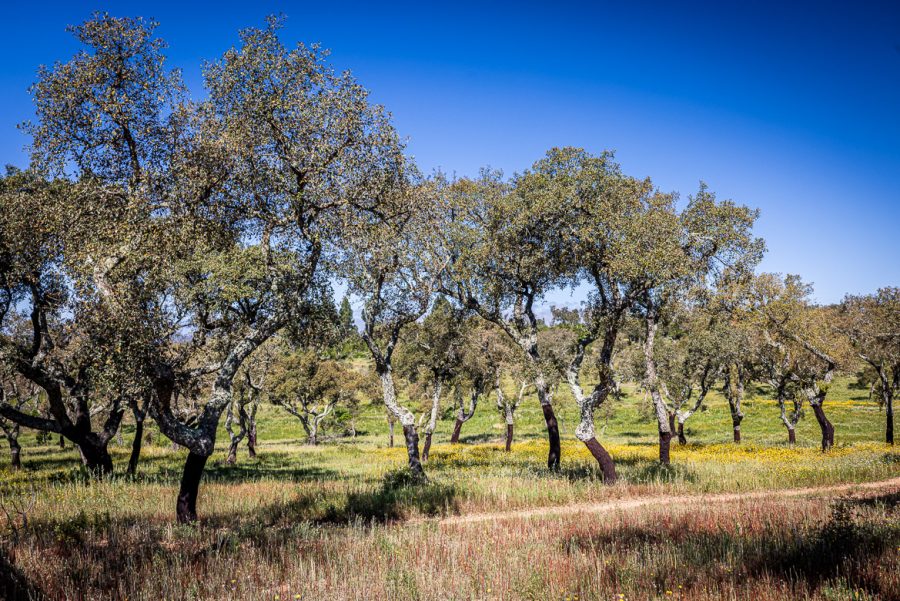
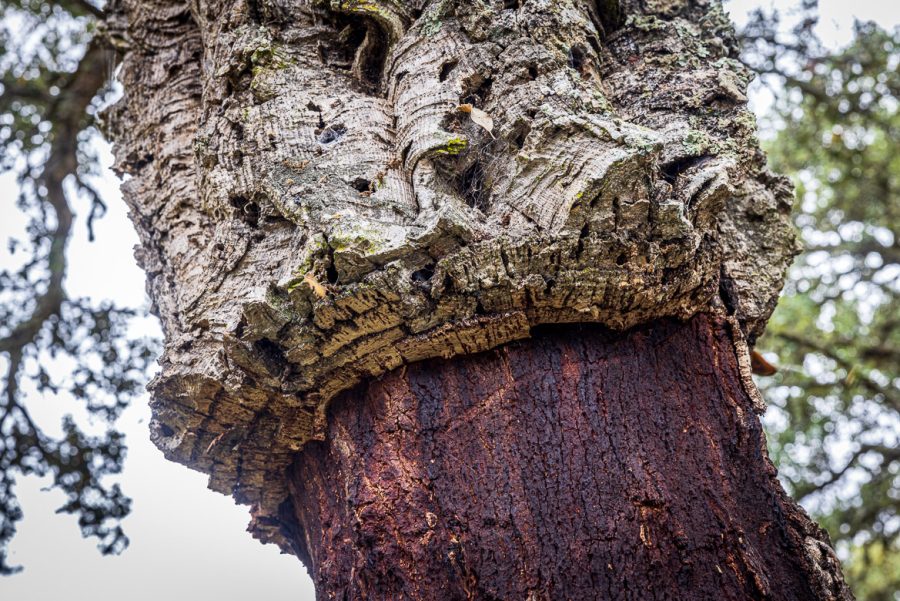
Chromeleque do Xerez
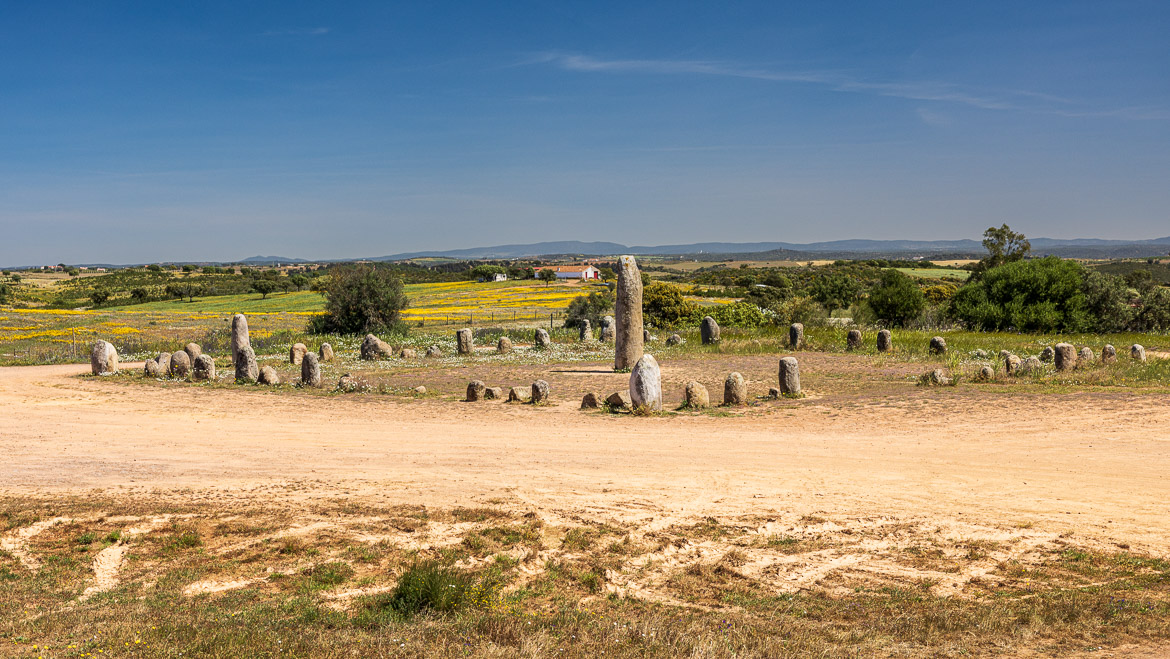
Whereas the Chromeleque dos Almendres is west of Evora, the next cromlech we are looking at was situated east of Monsaraz, but when the Alqueva dam was built and the artificial lake of Alqueva was created, the area was flooded, so the whole circle of standing stones was moved to a new location west of Monsaraz. The stones in the circle (which really in this case isn’t a circle, but a rectangle) are between 35 cm and 2 metres in height and the menhir in the centre is around 4.5m and weighs in at 7 tonnes.
The whole area around Monsaraz is full of menhirs and stone circles. Midday, when the sun was too harsh to photograph the town, we spent time looking for and documenting prehistoric monuments in the area. The Cromeleque do Xerez is dated to between the 4th and 5th C BC.
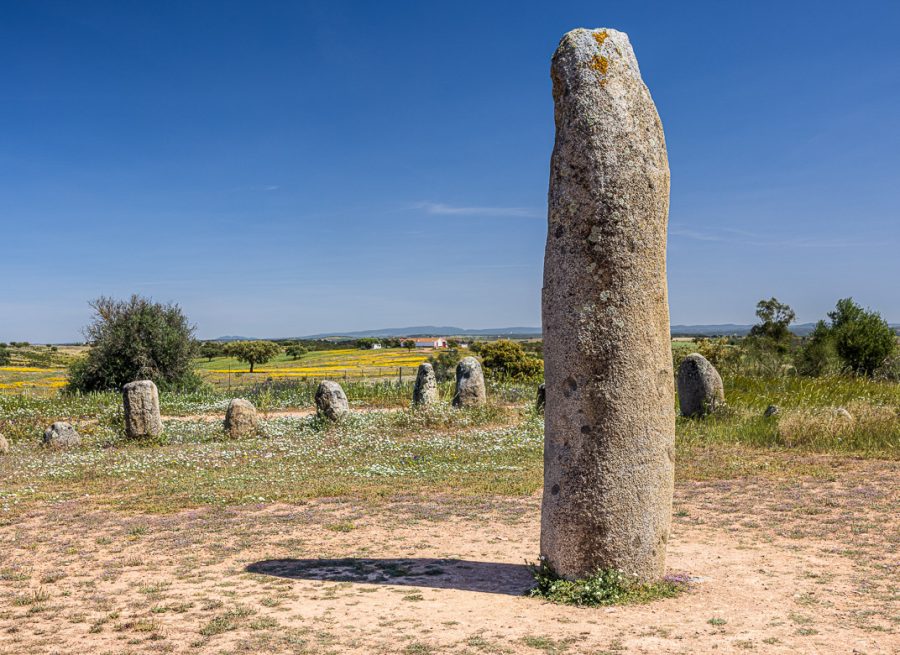
The area between the different prehistoric monuments in this part of Portugal was full of wild flowers, which made our “hunt” for menhirs and cromlechs very colourful.
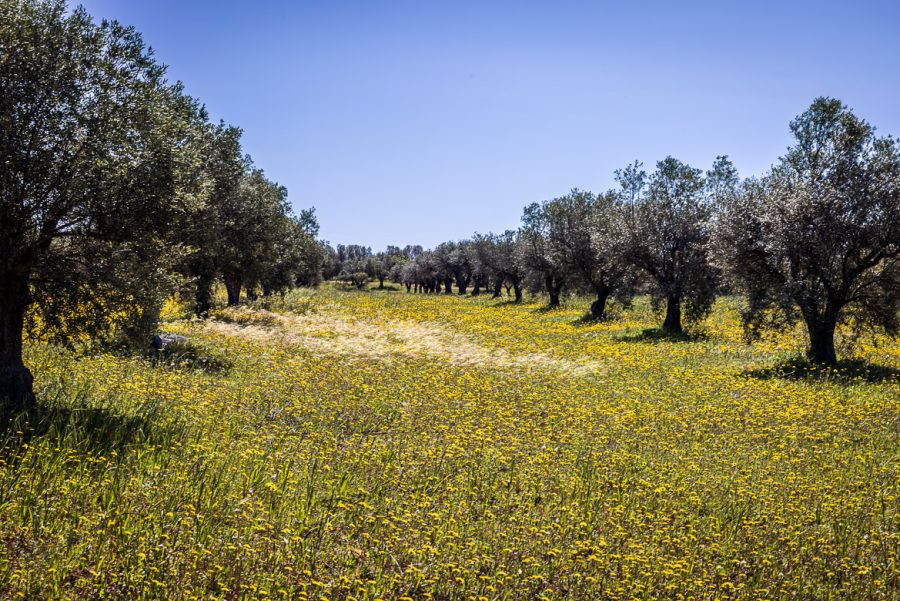
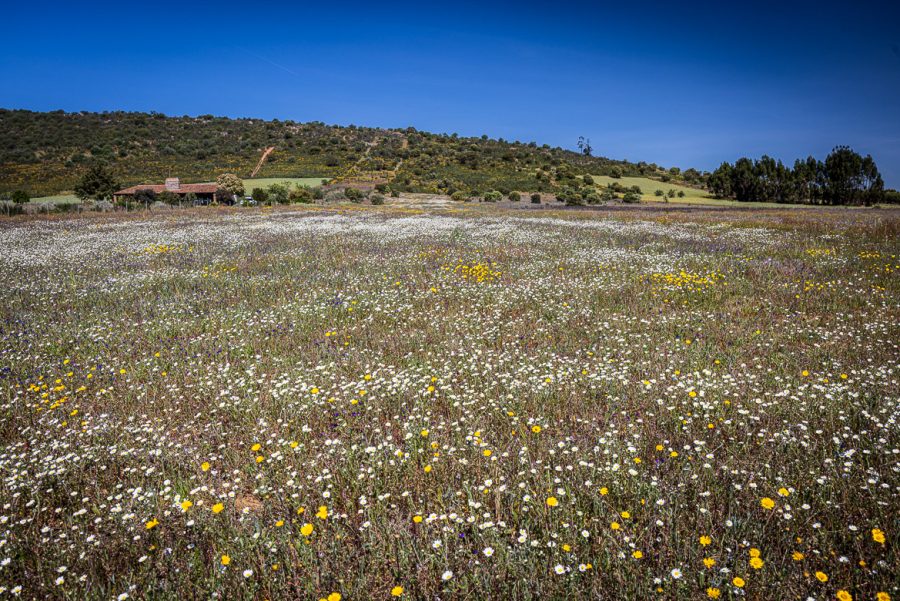
Menir do Outeiro
The Menir do Outeiro is located not far from the Chromeleque do Xerez and is seen to be part of Xerez complex. it is a single free standing stone 5.6m high and weighs around 8 tonnes. At its base it is about one metre In diameter. The top has a hollow area of around 30 cm, which is believed to represent a urethra, accentuating that the megalith symbolises a phallus. It is believed to be from around 4,000 BC and is one of the best examples of a phallic menhir on the Iberian peninsula.
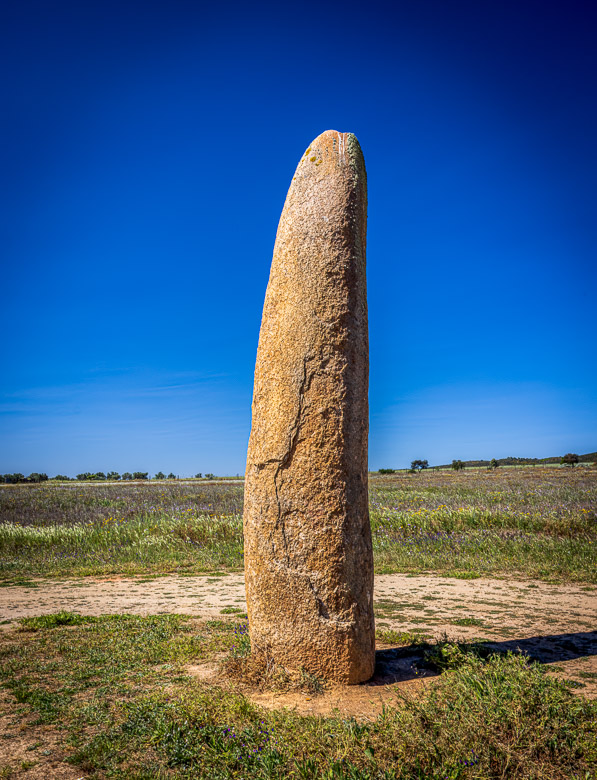
Menir da Bulhoa
This menhir is part of a the Xerez group of megalithic monuments and is like the others located on the plain below the hill town of Monsaraz. It is around 4m tall and is decorated with engravings depicting the sun’s rays, a staff and varying zigzagging lines. The bottom has been cut off and used for other purposes, so a new base of the same size and shape has been created and attached to the stone. It was originally made at the 3rd or 4th millennium BC.
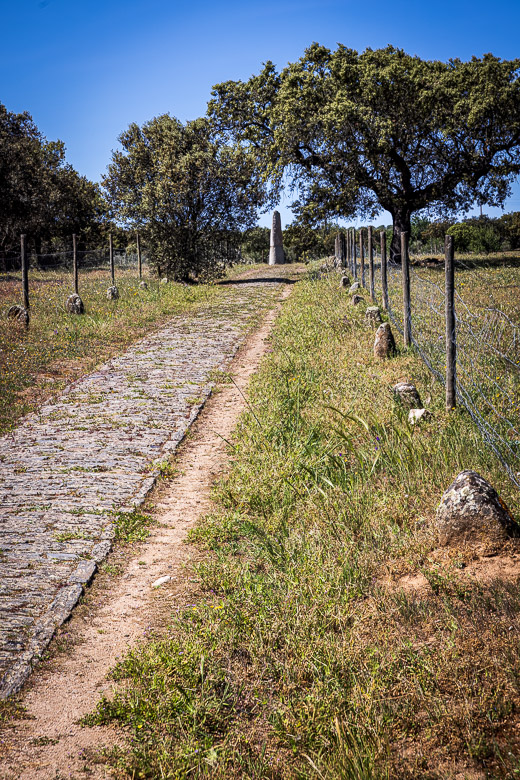
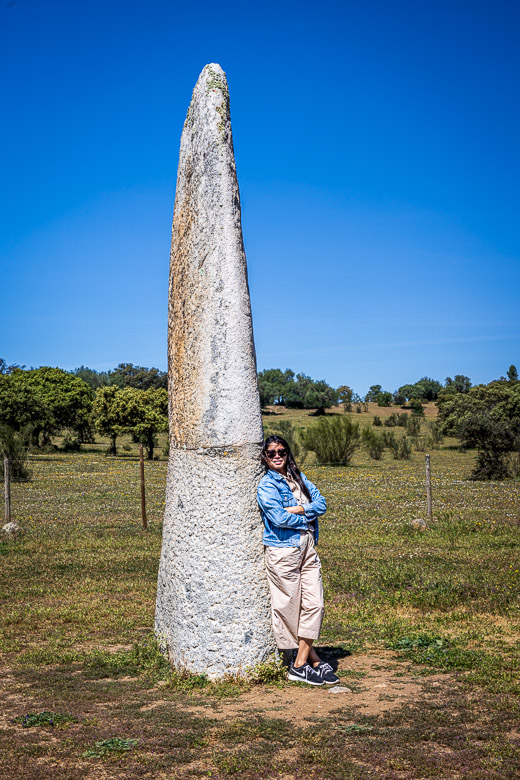
Menir da Meada
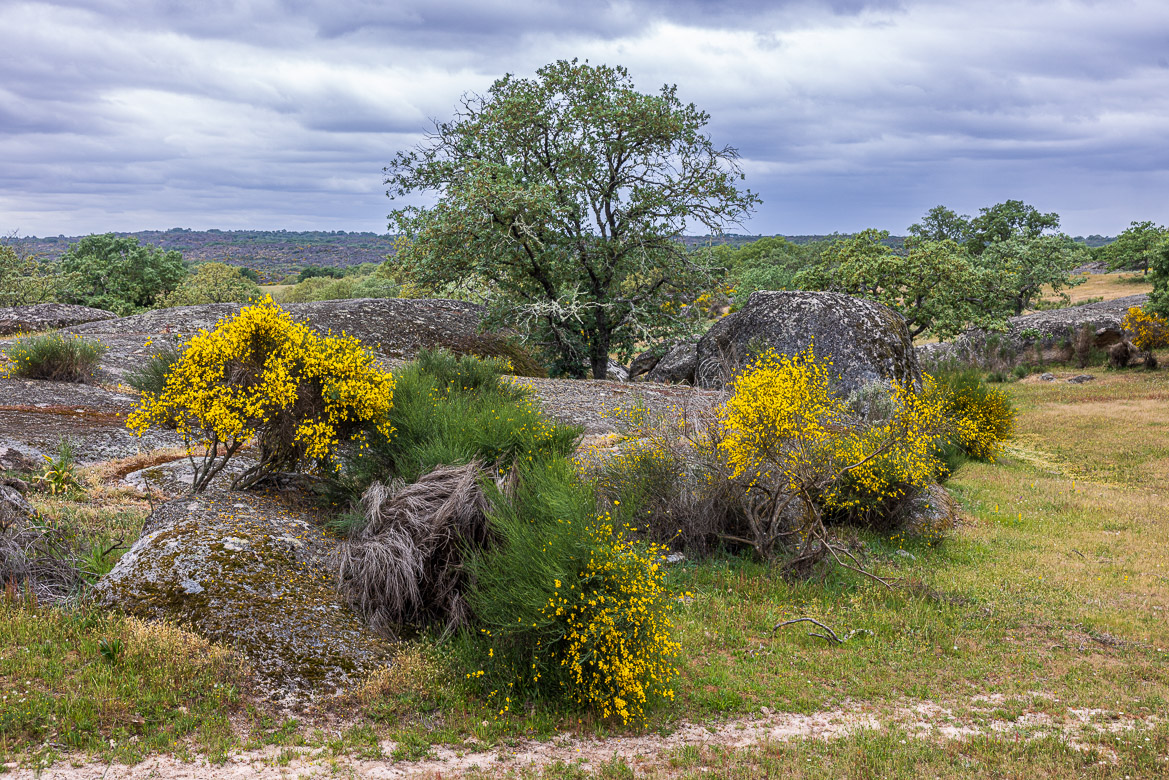
As we moved further north along the Spanish border the landscape changed character. Large boulders were “planted” in the landscape surrounded by bushes and wildflowers. I will show more of this as I present more posts from Portugal. And in this landscape we found the largest menhir on the Iberian peninsula, Menir da Meada. It is 7.5 tall, has a circumference of 3.9m and a weight of 18 tonnes.
Carbon dating of coal found underneath the base place its age to around 5,000 BC. If would make it the oldest menhir discovered yet anywhere in the world!. The stone has a clear phallic shape with a bump similar to a glans enveloping the top. The surface has probably been polished and marks left by the polishing tools are still visible.
